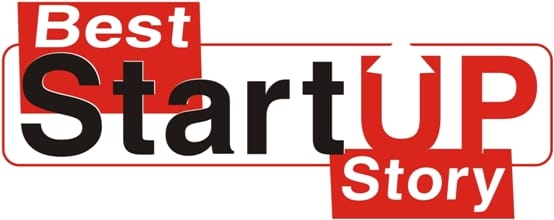Every farmer faces this question multiple times per season: repair the aging combine or replace it? Limp through another year with the temperamental tractor or invest in something reliable?
The answer affects cash flow, productivity, and stress levels for years. Get it wrong and you’re either burning money on endless repairs or carrying debt on farm equipment you didn’t really need yet. There’s no perfect formula, but asking the right questions helps.
What Are the Repair Costs Actually Telling You?
The $5,000 question:
Your combine needs a $5,000 repair. Your gut says “just fix it,” but that’s the third major repair this year. Total repair costs are approaching $15,000.
The pattern matters more than individual repairs:
One major repair on older equipment makes sense. Chronic problems signal something different. When you’re replacing multiple systems or the same part repeatedly, the equipment is telling you something.
The downtime cost:
A $3,000 repair might seem reasonable until you factor in three days waiting for parts during harvest. Lost productivity during critical windows often costs more than the repair itself.
The stress factor:
Some costs don’t show up on spreadsheets. Wondering if farm equipment will start each morning or fail mid-field creates real problems. Reliability has value even if it’s hard to quantify.
How Do Operating Hours and Age Factor In?
Hours tell the real story:
A ten-year-old tractor with 2,000 hours differs dramatically from one with 8,000 hours. Age matters less than use intensity.
General guidance ranges:
Tractors approaching 10,000 hours typically need major work or replacement consideration. Combines reaching 3,000 to 4,000 separator hours face similar questions. These aren’t hard rules, just points where maintenance costs typically accelerate.
Maintenance history matters:
Well-maintained equipment with high hours can outlast poorly maintained equipment with lower hours. Your own maintenance discipline affects these decisions.
What’s Your Operation’s Growth Trajectory?
The capacity question:
If your operation has grown from 1,000 to 2,000 acres over five years, your equipment needs have changed. Repairing equipment that’s now undersized for your operation wastes money regardless of hours or condition.
Technology gaps:
Precision agriculture adoption creates real productivity differences. Equipment lacking GPS guidance, yield monitoring, or variable rate capabilities costs you money in inputs and lost yield potential compared to equipped machines.
The right-sized equipment question:
Sometimes repair vs replace is actually a wrong question. The real question is whether you have the right equipment for your current operation, regardless of what you own now.
How Does Financing Change Math?
The cash flow reality:
Saying “I can’t afford new equipment” while spending $20,000 annually on repairs creates a trap. Farm equipment financing solutions let agricultural operators spread equipment costs across predictable monthly payments rather than depleting working capital or bleeding cash on escalating repairs.
Comparing true costs:
A $150,000 combined financed over five years costs roughly $2,500 to $3,000 monthly depending on rates and terms. Compare that to your current annual repair costs plus downtime losses plus the stress of uncertain reliability.
Timing the transition:
Financing allows farm equipment replacement before complete failure forces your hand at potentially bad timing. Planned transitions during off-season beat desperate purchases during planting or harvest.
Tax treatment differences:
Repair costs are deductible as incurred. Financing payments may qualify as operating expenses depending on structure. Equipment purchases follow capital cost allowance schedules. Your accountant can show how timing affects your specific tax situation.
What About Used Equipment Options?
The middle ground:
Buying three-year-old equipment with moderate hours splits the difference between new equipment costs and aging farm equipment problems. Lower purchase price with remaining useful life can make sense.
The inspection requirement:
Used farm equipment demands thorough inspection. Operating hours, maintenance records, and component conditions all matter. What looks like savings can become expensive if you’re buying someone else’s problem.
Financing used equipment:
Lenders finance used farm equipment based on age, hours, condition, and value. Older or higher-hour equipment may require larger down payments or carry higher rates compared to new equipment financing.
Making the Decision
Questions to ask yourself:
Is this farm equipment costing more than $X annually in repairs? (Set your own threshold)
Has it failed during critical windows in the past two years?
Does it lack capabilities I need for current operation size or practices?
Am I losing sleep worrying about reliability?
Would financing new or newer equipment cost less than I’m currently spending on repairs and downtime?
No universal answer:
A well-maintained machine with minor issues deserves another year. A chronic problem machine that’s undersized for your operation needs replacement regardless of whether you “can afford it.”
The financing tool:
Financing doesn’t make bad farm equipment decisions good, but it can make good decisions financially feasible by preserving working capital for inputs, operations, and unexpected needs.
Conclusion
The repair vs replace decision affects every farmer eventually. Asking the right questions about repair patterns, operating hours, operation needs, and true costs helps clarify when farm equipment has given what it can.
Financing options change the math by converting large one-time expenditures into manageable monthly costs. This doesn’t make every replacement decision correct, but it removes the “I can’t afford it” barrier from decisions that otherwise make operational sense.
Your farm equipment should work for your operation, not the other way around.
Also Read: Why Custom Cotton Bags are the Silent Heroes of Brand visibility

